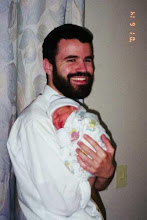In our previous post, we presented the structure of Maggid. We noted that the middle of Maggid tells the story of our suffering in Egypt, and our redemption. There is some debate, though, as to where we end this story.
Our
Haggadah takes the story through the makkot (plagues), but then, before
Rabban Gamliel's closing statement about the centrality of the Korban
Pesach, Matzah and Marror, we insert a midrashic passage regarding the
number of plagues in Egypt and at the Sea, and the Dayyenu song which
summarizes Divine miracles on our behalf. The Rambam, in his Haggadah,
omitted this midrash and song. What is the reason for including or
omitting these elements?
Rav
Soloveitchik explained that the Rambam (as seen in Hilchot Chametz
uMatzah 7:1) believed that the Seder is meant to discuss our experience
in Egypt, and our rescue from there - but this ends with our actual
Exodus. All that happens afterward is not part of the Seder. Therefore,
we halt with the list of ten plagues. (For more, see Rav Hershel
Schachter's article in Masorah 3 (Nisan 5750), pp. 27-28.)
It
is possible, though, to suggest a justification for including the later
miracles at the Sea. When Gd told Avraham that we would be 'strangers
in a land not our own', compelled to work and to suffer, He also
promised that the nation that harmed us would be judged for their deeds.
The midrash which counts the plagues at the sea presents the punishment
the Egyptians received for their cruelty during the enslavement of the
Jews (more on that in "What happened to the Egyptians at the Sea, and why does it matter?"), and so it truly details part of the Egyptian experience.
Have a great day,
Mordechai

No comments:
Post a Comment